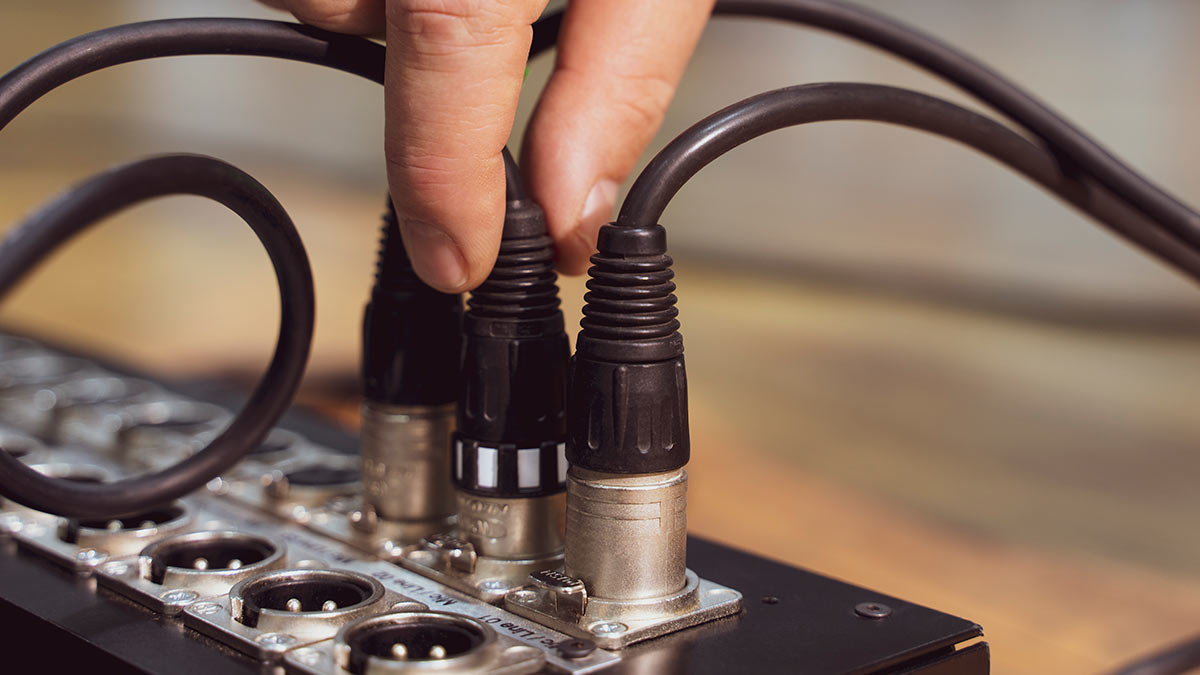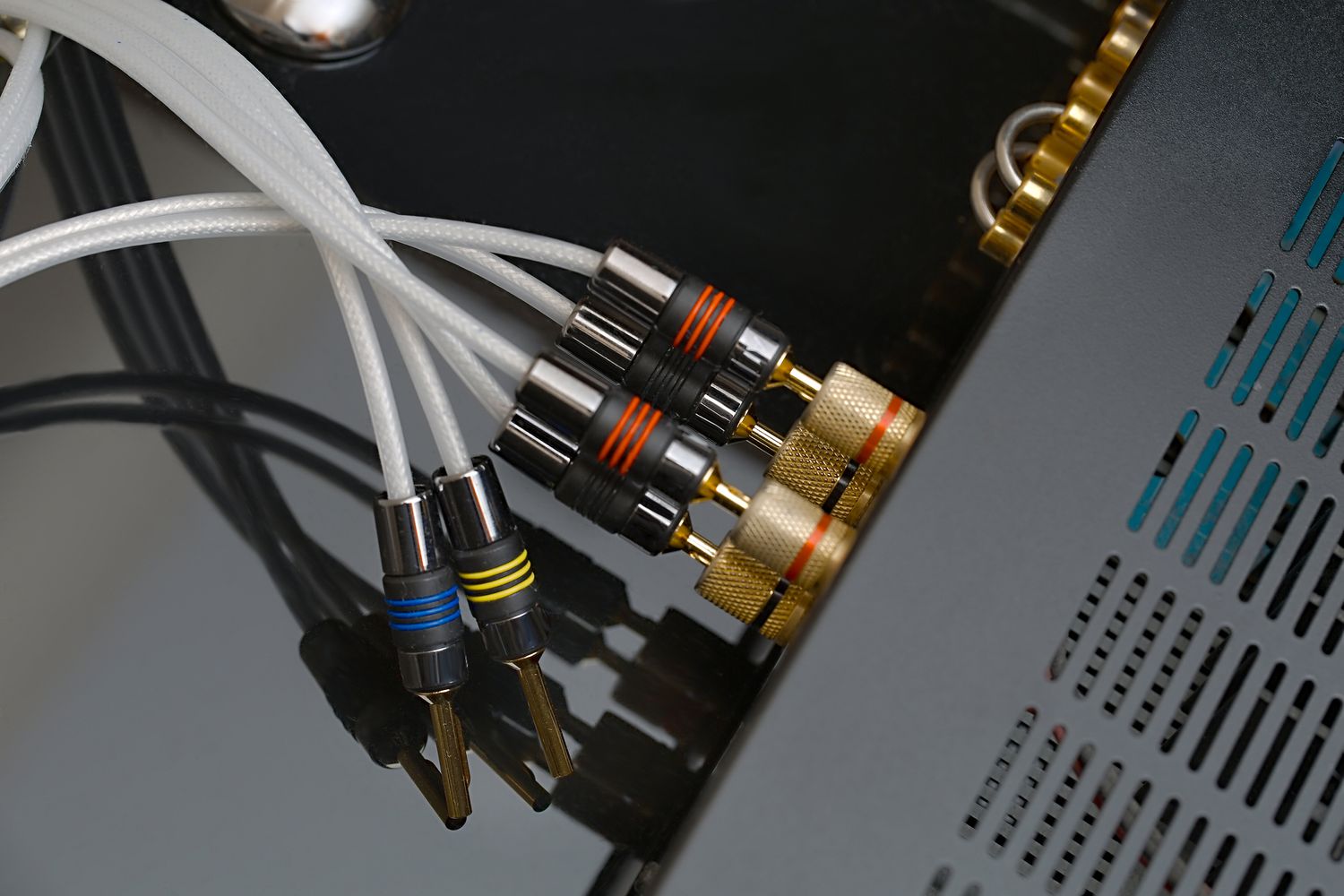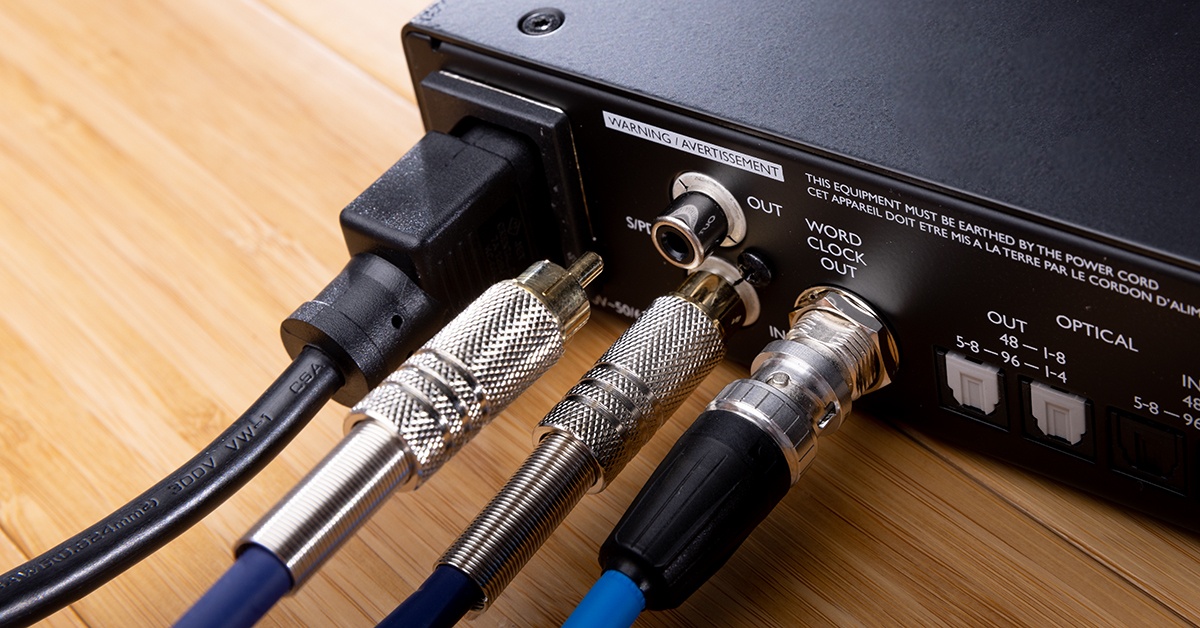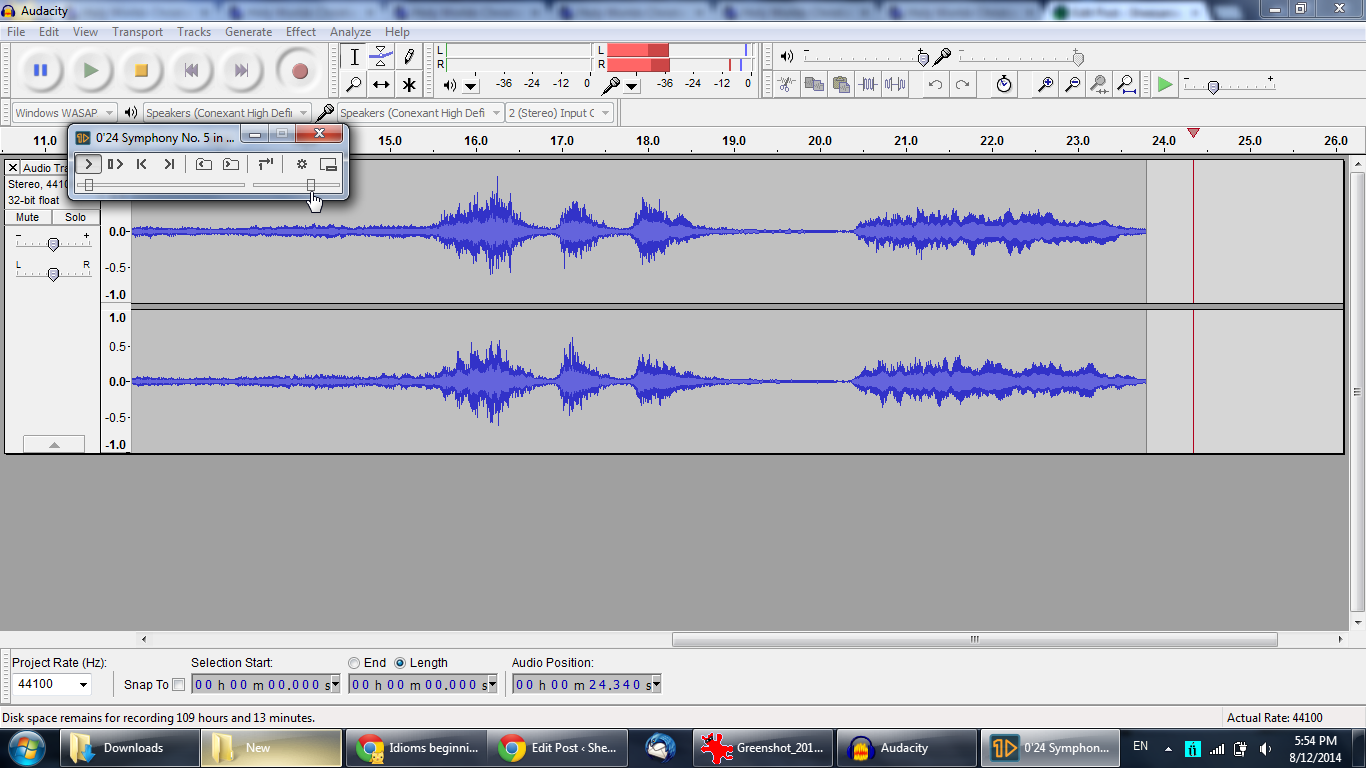Home>Production & Technology>Audio Cable>How To Play Music With Virtual Audio Cable


Audio Cable
How To Play Music With Virtual Audio Cable
Modified: March 5, 2024
Learn how to play music with Virtual Audio Cable. Connect and route audio signals using this powerful audio cable software. Enhance your audio experience now!
(Many of the links in this article redirect to a specific reviewed product. Your purchase of these products through affiliate links helps to generate commission for AudioLover.com, at no extra cost. Learn more)
Table of Contents
Introduction
Welcome to the world of virtual audio cables, where you can take your audio experience to a whole new level. Whether you’re a music enthusiast, podcaster, or audio professional, virtual audio cables provide a powerful tool for routing and manipulating audio in your digital setup. In this article, we will explore what virtual audio cables are and how they can be used to play music with seamless precision.
Virtual audio cables, also known as VACs, are software-based solutions that allow you to create virtual connections between audio sources and destinations on your computer. These cables act as virtual patch cables, enabling you to route audio signals between different applications and devices in real time.
With virtual audio cables, you can unlock a myriad of possibilities. For example, you can route audio from your favorite music player to your recording software, allowing you to capture and manipulate the sound in real time. You can also use virtual audio cables to stream audio from one application to another, creating complex audio setups that cater to your specific needs.
Setting up virtual audio cables can be a game-changer for musicians, DJs, and producers. It allows them to harness the power of digital audio production tools while maintaining utmost control over the audio routing and processing. Whether you’re a beginner or an experienced audio professional, understanding how to set up and configure virtual audio cables will undoubtedly take your music creation process to the next level.
In the following sections, we will guide you through the process of setting up and configuring virtual audio cables to play music with precision. We will cover both the basic setup for music playback and more advanced configurations for music production software. So, let’s dive in and unlock the full potential of virtual audio cables!
What is Virtual Audio Cable?
Virtual Audio Cable (VAC) is a software application that creates virtual cables to route and transfer audio between different applications or devices on a computer. It functions as a digital patch cable, allowing for real-time audio streaming and manipulation without the need for physical cables.
Essentially, VAC creates a set of virtual input and output devices on your computer, which act as the endpoints for audio transmission. These virtual cables can be used to route audio between various applications, such as music players, streaming software, recording programs, and audio editing tools.
One of the key benefits of using virtual audio cables is the flexibility and control they provide over audio routing. With VAC, you can create custom audio setups according to your specific requirements. For example, you can send audio output from one application as input to another, allowing for real-time audio processing and manipulation.
Virtual audio cables have a wide range of applications in various fields. Musicians and DJs can use VAC to stream audio from their music players or DJ software to other applications for recording or live performance. Podcasters and streamers can utilize VAC to capture audio from multiple sources and mix them in real time. Audio professionals can use VAC for audio post-production, creating complex audio routing setups for editing and mixing.
Virtual audio cables are not limited to just one cable; you can create multiple virtual cables to accommodate the needs of your specific audio setup. Each virtual cable acts as an independent audio channel, capable of transmitting audio data with low latency and high fidelity.
One important thing to note is that virtual audio cables operate at the software level, which means that they do not affect the physical audio hardware of your computer. They provide a virtual layer of audio routing and mixing, allowing you to manipulate audio signals without any impact on your computer’s physical audio components.
In summary, virtual audio cables are software tools that offer a flexible and powerful solution for routing and manipulating audio on your computer. Whether you’re a musician, podcaster, or audio professional, incorporating virtual audio cables into your setup can greatly enhance your audio workflow and open up a world of creative possibilities.
Setting up Virtual Audio Cable
Setting up virtual audio cables on your computer is a straightforward process that requires a few simple steps. Follow the instructions below to get started:
- Download and Install Virtual Audio Cable: Begin by downloading the virtual audio cable software from the official website. Once downloaded, run the installer and follow the on-screen instructions to install the software on your computer.
- Create Virtual Cables: After the installation is complete, open the virtual audio cable control panel. Here, you can configure the number of virtual cables you want to create. It is recommended to start with at least two virtual cables, one for input and another for output.
- Set Input and Output Devices: Once you’ve created the virtual cables, you need to specify the input and output devices for each cable. In the control panel, select the virtual cable you want to configure and choose the corresponding input and output devices from the drop-down menus.
- Configure Sample Rate and Buffer Size: It is essential to adjust the sample rate and buffer size settings to ensure optimal audio performance. These settings determine the quality and latency of the audio. Experiment with different values to find the balance that works best for your setup.
- Test Audio Routing: To verify that the virtual audio cables are working correctly, open a music player or any other application that plays audio. In the settings of the application, select the virtual output cable as the audio output device. Play some audio and check if you can hear the sound through the virtual input cable.
Once you have successfully set up the virtual audio cables, you can start exploring different ways to route and manipulate audio within your computer system. Whether you want to capture audio from a music player for recording or stream audio between multiple applications, virtual audio cables provide a versatile and powerful solution.
It’s worth mentioning that the specific steps may vary slightly depending on the virtual audio cable software you are using. However, the general concept remains the same across different applications, and the settings mentioned above are commonly found in most virtual audio cable programs.
Keep in mind that virtual audio cables require some technical expertise and may take some trial and error to configure them optimally. Don’t be discouraged if you encounter some challenges along the way. With practice and experimentation, you’ll become more comfortable with using virtual audio cables and harness their full potential.
Configuring Virtual Audio Cable with Music Player
Once you have set up your virtual audio cables, you can now configure them with your favorite music player to route audio and enhance your music listening experience. Follow the steps below to configure virtual audio cables with your music player:
- Open the Music Player Settings: Launch your music player software and access the settings or preferences menu.
- Select the Output Device: In the audio settings of the music player, locate the output device or audio output settings. Here, you can choose the virtual output cable as the preferred output device.
- Adjust the Sample Rate and Buffer Size: To optimize the audio performance, adjust the sample rate and buffer size settings in the music player. These settings should match the settings you configured in the virtual audio cable control panel.
- Test the Audio Routing: Play a song in your music player and check if you can hear the audio through the virtual input cable. If the audio is successfully routed through the virtual audio cables, you have successfully configured your music player.
- Explore Advanced Features: Depending on your virtual audio cable software, you may have access to additional features and settings. Take some time to explore these options, as they can enhance your music listening experience. For example, you can adjust the audio latency, enable audio effects, or create virtual audio mixers for more intricate audio setups.
By configuring your music player to use virtual audio cables, you can now route the audio output to other applications or devices. This opens up possibilities such as recording the audio, applying real-time effects, or streaming it to other software for further manipulation.
It’s important to note that some music players may not have native support for virtual audio cables. In such cases, you may need to use additional software, such as a virtual audio cable driver or a plugin, to enable the routing of audio output to the virtual audio cables.
Experiment with different configurations and settings to find the optimal setup that suits your needs and preferences. Virtual audio cables offer tremendous flexibility and control, allowing you to create personalized audio setups tailored to your music listening experience.
Configuring Virtual Audio Cable with Music Production Software
If you are a music producer or audio professional, configuring virtual audio cables with music production software can significantly enhance your workflow and creative capabilities. Here’s how you can set up and configure virtual audio cables with your music production software:
- Open the Software Settings: Launch your music production software, such as a digital audio workstation (DAW) or a virtual instrument plugin, and access the settings or preferences menu.
- Configure Audio Device: In the audio settings of the software, locate the audio device or audio interface settings. Here, you need to select the virtual input cable as the audio input device and the virtual output cable as the audio output device.
- Adjust Sample Rate and Buffer Size: To optimize audio performance, adjust the sample rate and buffer size settings in the music production software. These settings should match the settings you configured in the virtual audio cable control panel.
- Set Up Routing: Depending on your music production software, you may have a dedicated routing section or mixer. In this area, you can set up the desired audio routing configuration using the virtual audio cables. For example, you can route audio from a virtual instrument plugin to an audio track in your DAW.
- Explore Additional Features: Take advantage of any additional features or settings in your music production software that are designed to work with virtual audio cables. These features may include sidechain inputs, virtual inputs/outputs, or the ability to create custom submixes using virtual audio cables.
Configuring virtual audio cables with music production software provides a wide array of possibilities, such as recording audio from virtual instruments, routing audio through various processing plugins, or creating complex soundscapes by combining audio from different sources.
Keep in mind that each music production software may have slightly different configuration options and terminology. Familiarize yourself with the software’s user manual or online resources for specific instructions on configuring virtual audio cables.
It’s worth mentioning that virtual audio cables work seamlessly with most music production software, but there may be cases where additional settings or plugins are required to ensure compatibility. Explore forums and online communities dedicated to your specific software to find tips, tricks, and troubleshooting solutions related to virtual audio cable integration.
With virtual audio cables integrated into your music production software, you have the power to create intricate audio setups, increase efficiency, and unlock new creative possibilities. Embrace experimentation and explore different routing configurations to unleash the full potential of virtual audio cables in your music production workflow.
Troubleshooting Common Issues
While virtual audio cables can greatly enhance your audio experience, you may encounter some common issues along the way. Here are some troubleshooting tips to help you overcome these challenges:
- No Audio Output: If you’re not hearing any audio output through the virtual audio cables, double-check that you have selected the correct output device in both the virtual audio cable control panel and the settings of the application or software you’re using.
- Audio Latency: Latency refers to the delay between an audio signal being processed and its output. If you’re experiencing high latency, try adjusting the buffer size in both the virtual audio cable control panel and the settings of the software you’re using. Lowering the buffer size can reduce latency but may increase the strain on your computer’s processing power.
- Crackling or Distorted Audio: If you hear crackling or distorted audio, it could be due to buffer underruns or incorrect sample rate settings. Try increasing the buffer size or adjusting the sample rate to see if that improves the audio quality.
- Incorrect Routing: If your audio is not being routed correctly, double-check that you have set up the correct input and output devices in both the virtual audio cable control panel and the settings of the applications or software involved.
- Incompatible Software: Some software applications may not be compatible with virtual audio cables or may require additional plugins or drivers. Visit the official forums or support pages of the software you’re using to see if there are any known compatibility issues or specific configuration settings you need to follow.
- Outdated Drivers or Software: Make sure you have the latest drivers for your audio interface or sound card, as well as the most up-to-date version of the virtual audio cable software. Outdated drivers or software can lead to compatibility issues and unexpected behavior.
- Insufficient System Resources: Virtual audio cables can be demanding on your computer’s resources, especially if you’re running multiple applications simultaneously. Ensure that your computer meets the minimum system requirements and consider closing unnecessary background processes to free up resources.
If you encounter persistent issues that you’re unable to resolve, consider reaching out to the virtual audio cable software’s support team or community for further assistance. They can provide specific guidance and troubleshooting steps based on the software you’re using.
Remember, troubleshooting common issues with virtual audio cables may require some patience and experimentation. With persistence, you can overcome these challenges and enjoy a seamless audio experience with virtual audio cables.
Conclusion
Virtual audio cables provide an invaluable tool for audio enthusiasts, musicians, and audio professionals to create custom audio setups, route audio between applications, and enhance their overall audio experience. By harnessing the power of virtual audio cables, you can take control of your audio routing, recording, and production processes with precision and flexibility.
In this article, we explored the concept of virtual audio cables and how they work. We learned about the process of setting up and configuring virtual audio cables, both for music playback and music production software. We also discussed troubleshooting common issues that may arise during the setup and usage of virtual audio cables.
Whether you want to stream audio from your music player to your recording software, capture audio from virtual instruments for post-production, or create complex audio routing setups, virtual audio cables offer a versatile and powerful solution.
While getting started with virtual audio cables may require some technical know-how and experimentation, the benefits they provide make it well worth the effort. With virtual audio cables, you can unlock new creative possibilities, enhance your workflow, and achieve a higher level of control over your audio setup.
Remember to always stay up-to-date with the latest drivers and software versions for your virtual audio cable application and other audio-related software on your computer. This ensures compatibility and optimal performance.
In conclusion, virtual audio cables are a game-changer in the world of audio. They empower you to control and manipulate audio with ease, opening up endless opportunities for creativity and expression. So, go ahead, explore, experiment, and make the most of virtual audio cables in your audio journey.











